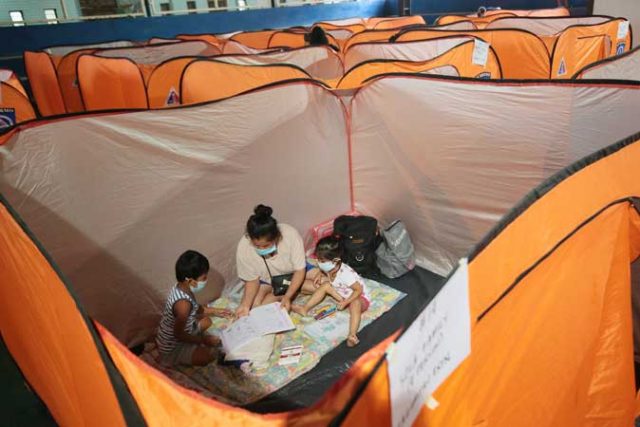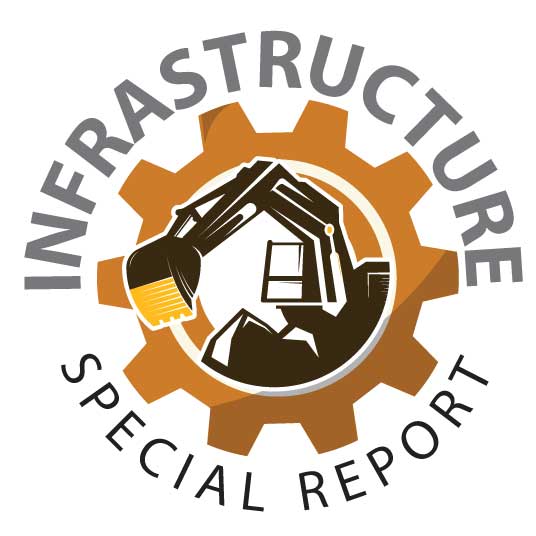
By Luz Wendy T. Noble, Reporter
THE PUBLIC SCHOOL is among the humblest examples of government infrastructure — not glamorous at all, in contrast to gleaming new highways or bridges; built on the cheap by contractors offering the lowest bids; and little changed for decades. But for all that, schools are their communities’ multipurpose heroes — halls of learning in normal times, voting centers every few years — and evacuation sites when disaster strikes.
The late-2020 typhoons might have finally served as the catalyst for rethinking the role of public schools during pandemics, because, as constructed, they violate just about every single item in the COVID-containment playbook, being inadequate for sanitation, hygiene, and social distancing. But it’s one thing to design the ideal evacuation center, it’s another matter altogether to build a structure that will also serve the community well when no calamities are on the horizon.
For now, schools, barangay basketball courts, and other public structures are the go-to facilities for calamities, and local government officials’ primary concern is that they’re available — and well-stocked.
“Gone are the days when you can pack them all in,” Valenzuela Mayor Rexlon T. Gatchalian said in a Zoom interview.

“It used to be that you were happy if each barangay had one evacuation site. Now it’s three sites at a minimum per barangay,” he said. Valenzuela’s own touch is to set up modular tents inside rooms to not only provide some privacy to evacuees, but also to serve as visual indicators of capacity, to discourage the practice of packing people in too closely, Mr. Gatchalian added.
“You have to anticipate that people are moving in haste, so they might have forgotten their face masks, their face shields. So those must be readily available at the doorstep when they register as evacuees,” he said.
PREVENTING DISEASE
One thing evacuation centers should not be is vectors for disease — or, for that matter, shelters for symptomatic evacuees.
“Kapag nagkaroon ng emergency, hindi na puwede na halos yakap-yakap mo na lang ‘yung nire-rescue mo at sugod na lang kayo ng sugod (In an emergency, you can no longer pack in the evacuees and keep filling the center beyond capacity), according to Mark Cashean E. Timbal, spokesman for the National Disaster Risk Reduction and Management Council (NDRRMC), the lead government agency for managing disasters.
In a Zoom interview, Mr. Timbal said according to NDRRMC guidelines, no person showing symptoms of coronavirus disease 2019 (COVID-19) should be brought to evacuation centers, with the protocol dictating that they be brought directly to isolation facilities. This implies that evacuation centers need to have the capacity to screen entrants — trained healthcare personnel at minimum.
WISH LISTS FOR THE IDEAL EVACUATION CENTER
Mark Anthony M. Gamboa, an environmental planner and the chief operating officer of the Centre for Neighbourhood Studies, said evacuation centers must have adequate provisions for “hygiene and sanitation, (which emerged as) serious issues in evacuation centers during the pandemic.”
Mr. Gamboa said in an e-mail: “The evacuation center should be a safe space where vulnerable persons (e.g., women, children, the elderly, persons with disabilities) are not further made vulnerable. These evacuation centers should be accessible and inclusive.”
One requirement of the pandemic — mask wearing — might dictate the construction of separate “day care” facilities for children 10 years and under, according to Rodrigo Angelo C. Ong, a fellow with the University of the Philippines OCTA Research Group, an organization of professional scientists.
Mr. Ong, a medical doctor, said by telephone that face masks are not recommended for such children, who may need to be housed separately under the supervision of a person known to be uninfected. It is also important to allot an isolated space for breastfeeding mothers, he added.
Mr. Ong said typhoons Rolly and Ulysses highlighted the need for more specialized evacuation facilities, with some evidence emerging that infections rose in the Bicol and Cagayan Valley regions as their residents took shelter from the typhoons.
He said COVID-19 cases in Bicol saw a “slight uptick” while Cagayan experienced a “greater uptick” after the November typhoons. He cautioned, however, that the actual cases might have been undercounted because of the disruption to COVID-19 testing during the storms.
“People were focused mainly on survival. They were eagerly waiting for the return to their homes; they were not exactly eager to be tested,” Mr. Ong said, noting that disaster managers were themselves focused on getting vulnerable people to safer ground.
Palafox Associates Founder and Principal Architect Felino A. Palafox, Jr. said every municipality should have 10 hectares set aside for evacuation facilities, which, ideally, need to come equipped with emergency clinics, water stations, helipads, fire trucks on standby, a security and police center, and a dedicated area where people can eat and cook meals.
“With the pandemic, maybe they should be three times as large, because of the need for social distancing,” he said by telephone.
Mr. Palafox also proposed the extensive use of materials like copper and bamboo, which can easily be cleaned and prevent surface transmission of the virus.
He acknowledged, however, that such dedicated evacuation facilities may only be realistic in rural areas, not cities.
HARD REALITIES
Mr. Gamboa, the environmental planner, warned against evacuation center plans that were too “utopian” for local government units with limited resources.
“The establishment of dedicated evacuation centers is not just a fiscal issue but also a spatial one. Local governments might have funds to establish evacuation centers but they might not have suitable sites,” he said. While Japan might be viewed as a model for disaster management facilities, he noted it might not be appropriate for poor countries.
The Valenzuela mayor, Mr. Gatchalian, added: “Real property prices in Metro Manila are expensive. Multi-purpose buildings are much more important — they provide bang for the buck.” He said the feature that makes schools suitable as evacuation sites in the first place is space — to accommodate evacuees, set up temporary mess halls and kitchens, registration centers, and showers.
PLANS
Even before the pandemic, the NDRRMC’s Mr. Timbal said the government was hoping to build at least two dedicated evacuation centers in every region, with officials focusing on the Pacific coast where typhoons make their first landfall. The permanent evacuation centers are estimated to cost P36.5 million each.
He said the government is ahead of target, having built more than a hundred dedicated evacuation centers across the country.
Mr. Gatchalian, an advocate of the multipurpose approach, said the vaccine rollout may once again highlight the versatility of schools, which could be pressed into service as inoculation sites.
But the fundamentals remain unchanged, according to the NDRRMC’s Mr. Timbal. “You have to make sure that at least, the basic comforts of home are available.”



